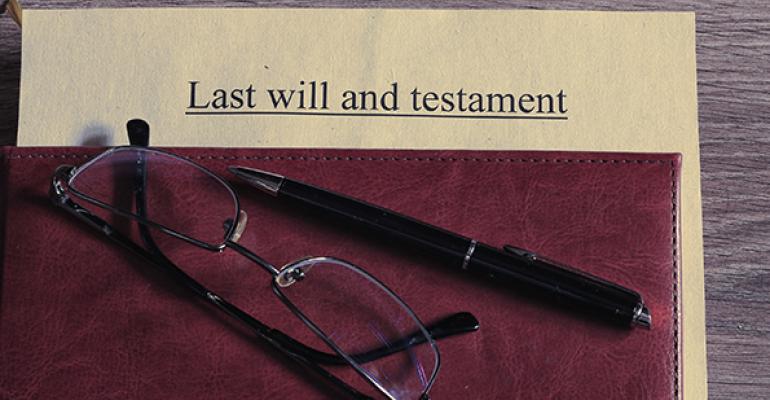A discussion of wills and probate can quickly devolve into a barrage of legalese that’s all but impenetrable to many advisors. That need not be the case; the concepts behind probate and the meanings of those seemingly complex terms are, in actuality, fairly simple. A recent post on the New York Estate Planning Attorney Blog does a great job of removing some of the unnecessary obfuscation and, hopefully, alleviating some of the consternation many advisors feel when faced with this topic.
Before it gets into the more nitty-gritty aspects of the probate process, the post offers a useful rundown of some of the essential vocabulary:
- “Decedent” means the person who died and whose estate is the now the subject of the probate proceeding;
- “Domicile” means the primary place of residence that establishes the venue for the probate proceeding;
- “Estate” means all the property or interest in property owned by the decedent at the time of death;
- “Personal Representative” means the person with authority to administer the decedent’s estate; and
- “Issue” means a descendant from a common ancestor, such as children of the decedent, including adopted children.
So, what exactly are we talking about when we say “probate”? At it’s most basic, probate is simply the process by which a decedent’s assets are distributed, be it through a will or, if no will is present, through the state’s intestacy laws. The fiduciary in charge of the estate, generally the executor or personal representative, distributes the assets under the supervision of the court.
It’s important to note that only certain items must pass through probate; notably, assets held in trust and transfer-on-death deeds escape it entirely. As with anything that involves the court system, probate can be a fairly drawn out process, so many estate-planners will structure plans to attempt to avoid it (and the associated expense) entirely.
As for the process, first, depending on the decedent’s domicile, the executor must file with the court to open the probate case, at which point he’ll receive authority from the court to administer the estate (usually in the form of “letters”). The executor then creates an inventory of probate assets. Once this document is complete, the assets are used to settle all proper claims submitted by the decedent’s creditors (probate files are public records, so creditors will find your client). After the debts are settled, then the assets are distributed to heirs and the estate is closed.
There are obviously a number of complicating factors that can arise, be they from creditors, beneficiaries or the wonderful world of court procedural rules, so an attorney is essential. However, at its heart, probate is a simple process of taking stock of a decedent’s stuff and then making sure it goes to the people he wanted it to, after his debts are settled, of course. It isn’t as scary as it seems.





